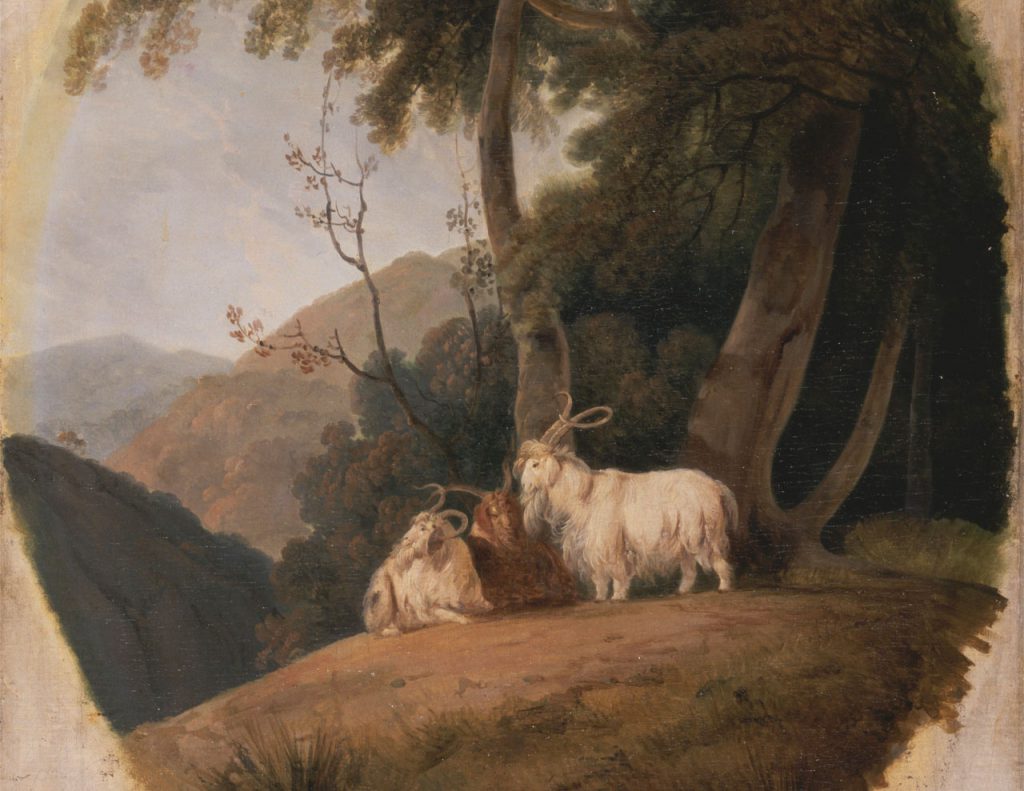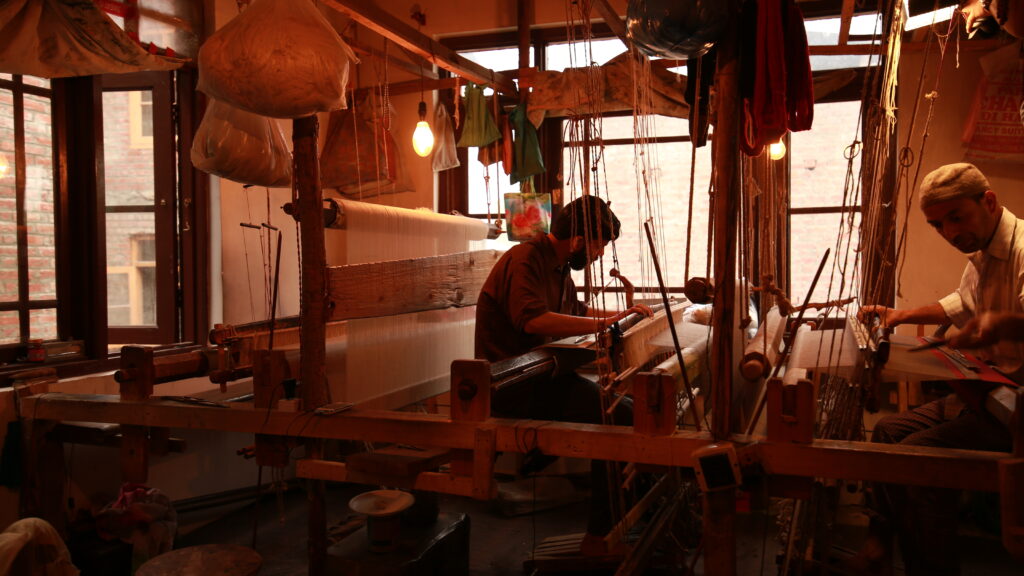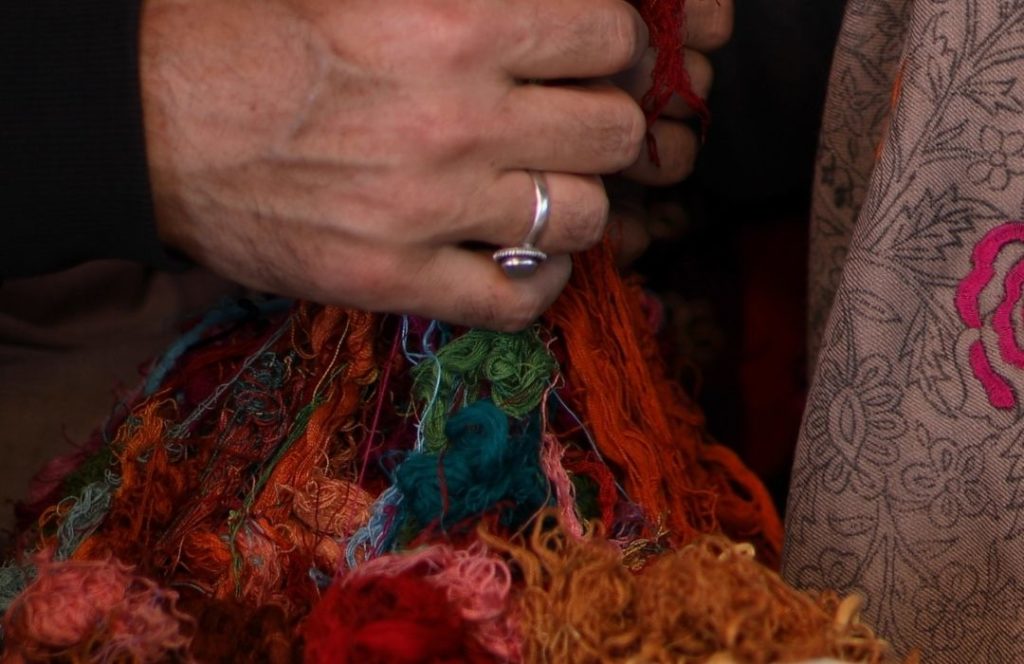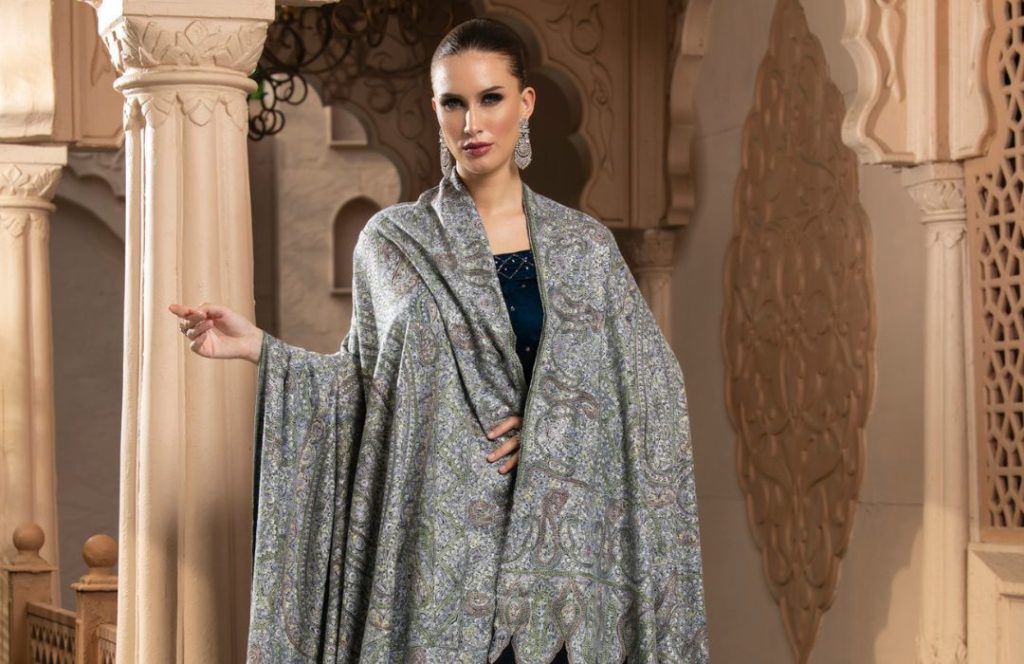The craft known as Pashmina, is the crafting finest Cashmere, sometimes known as "Diamond Fibre of Asia," and is native to the picturesque Kashmiri valley. Originating from the Persian word "pashm," which means wool, the name "Pashmina" comes forward. It aptly describes the crafting of fine, downy fibres that are extracted from the underbelly of the native Changthangi goats. They graze on the high-altitude plateaus of Ladakh. These goats withstand severe weather conditions. The base of the opulent Cashmere fabric, made from their wool, renowned for its unmatched warmth and softness. The process of crafting in Pashmina is painstaking and labour-intensive. Trained artisans in Kashmir use age-old handloom techniques to weave and embroider complex designs. Thus, producing classic masterpieces that capture the region's rich cultural heritage.
Kashmir, called "Paradise on Earth," renowned for its vibrant Pashmina weaving, woven into the region's rich cultural tapestry adding to its stunning landscapes. The history and legacy of Kashmir, intricately entwined with Pashmina art, reflects the people's tenacity and inventiveness. Beyond its economic importance, Pashmina has cultural significance as a staple of Kashmiri weddings and festivities. Thus, signifying luxury, tradition, and the timeless beauty of the local handicrafts. The center of this age-old craft, where artisans expertly transform nature's bounty into a textile. Thus, transcending borders and embodies the spirit of Kashmir's artistic legacy, is still Kashmir, despite the industry's struggles.
Origin of Pashmina Craft
The Pashmina craft is an intricate part of Kashmir's cultural legacy and goes beyond just a masterful weavers' creation. The painstaking handloom technique, handed down through the ages is evidence of the Kashmiri people's artistry and craftsmanship. The age-old techniques used to turn unprocessed Pashm into wearable art underscore the mutually reinforcing connection between human resourcefulness and the natural world. Thus, resulting in a textile that perfectly captures the spirit of the Himalayan region. The Pashmina craft, which has its roots in Kashmir, has come to represent the artistic legacy of Kashmir and the everlasting bond. It exists between its people, their homeland, and the delicate threads that weave this exquisite fabric.

The Pashmina handicraft, taught to the Kashmiri people by Persian artisans traveled with the saint Mir Syed Ali Hamdani. He was a mystic who toured the globe to spread the word about Islam. On his way to Kashmir, the saint made landfall in Ladakh. The goat species at the base of Changthangi Mountain astounded him since their wool was the finest and softest he had ever seen. Known as Changthangi goats for this reason. He sorted through the goat's wool and used it to make a pair of socks. Additionally, he gave the wool the name Pashmina because the word pashm. In Persian means "king of fibres" or "gold fibre," derived from it.
Fine Cashmere procured in Ladakh?
The journey begins at the top of Changthangi mountain. There, rare goat species known as Changra goats reside. The medium-sized Changra goats have two twisted horns. The Changpa tribe is mostly in charge of herding these. During the winter, the temperature in the Changthangi region drops to -40°C. As a result, the Changra goats grow a thick wool undercoat covering their bodies. Thereby shielding themselves from the severe weather. The wool is supple and thick. We refer to it as cashmere wool. Of all the cashmere wool produced, Ladakh produces the best quality. Goat breeds that yield cashmere wool are numerous. However, the Ladakhi Cashmere wool is the best of all.
The Craft of Pashmina
The creation of the finest Cashmere wool in the history and crafts of Kashmiri artisans is known as Pashmina Art. The result of the crafting is explicit accessories that convey opulent style in a variety of ways. The wool tufts, cleaned and soaked once they arrive in the Kashmir Valley. This marks the inception of Pashmina Art. To keep the essentiality in its original form, the cleaned and soaked wool is then dried outdoors. The Valley's local households receive the cleaned and dried Cashmere wool. Spinning is the next step in Pashmina art, and it starts here. Using a wooden wheel known as a yinder, spinning is the process of turning fine Cashmere wool into the finest Cashmere yarn. The women of the community are the ones who spin the most.
The first step in turning cashmere yarn into luxurious cashmere fabric is spinning. Weaving, the method which completes it. This process converts cashmere yarn into cashmere fabric. Thus, using a handloom made of forest wood, the weavers of the Kashmir Valley profoundly weave the fine yarn into the fine fabric. Cashmere yarn, used in the weaving process to make the warps and wefts is finest. Thus, making a complete, fine Cashmere fabric as a result. As a result, the necessary dimensions, given to the Cashmere are produced. As a result, many designs, indeed created, such as cashmere scarves and pashmina shawls.
Explicitly Weaving in Pashmina Craft

The warp and weft threads must be meticulously interlaced throughout the weaving process. Expert manipulation creates the foundation of the fabric from the vertically oriented warp and the horizontally oriented weft. The artisan can regulate the thread tension on the loom to produce a tight and even weave. The art of weaving Pashmina involves striking a fine balance between being too tight to produce a sturdy fabric and too loose to preserve the airy. Thus right feel that distinguishes Pashmina. The fabric gains layers with each shuttle passing through the loom. The artisan breathes life into the Pashmina shawl with each deft stroke.
The Cashmere fabric, put through additional steps after weaving to improve its texture and appearance is versatile. To smooth out the weave and get rid of any imperfections, some craftspeople wash and block their creations gently. Some may decide to add conventional finishes, like pressing or brushing, to bring out the sheen and softness of the fine fabric. As a result, the end product, a delicately woven fabric acting as a canvas for the exquisite embroidery. It frequently adorns Pashmina shawls, Cashmere Wraps and Cashmere Scarves demonstrating the marriage of artistry and craftsmanship.
Pashmina and designing

As soon as the finest Cashmere is adorned, the designing process begins. On the finest Cashmere, the amazing hands of artisans whirl in the designs and sing songs of art. The overall atmosphere of the valley denotes the intricate design in a variety of ways. Cashmere Wraps, Cashmere Scarves, and Pashmina Shawls are the three primary forms of Pashmina art. The art of creating the finest Ladakhi Cashmere accessories in unique designs is Pashmina Craft.
Designing in the Pashmina craft is a delicate and complex procedure that necessitates a thorough comprehension of the rich cultural legacy it represents in addition to the opulent material. With their generations-long skill, Kashmiri artisans painstakingly design and produce elaborate patterns, ranging from classic paisleys and florals to modern styles that satisfy changing fashion tastes. Often, the design process starts with a sketch, in which artists realize their imaginative ideas while taking into account elements like color harmony, balance, and the smooth incorporation of traditional motifs.
Pieces of Pashmina not only radiate elegance but also tell a tale of the artistic legacy of the area made possible by the deft use of the handloom. Thus, enabling the exact execution of these designs with meticulous attention to detail. Every design in Pashmina reflects the artisan's passion for maintaining the craft while adjusting to modern aesthetics, whether through traditional embroideries or contemporary interpretations. Pashmina design is a merger of tradition and innovation.
Three main Style of Pashmina Craft
There are mainly three styles in Pashmina Craft including Cashmere Wraps, Cashmere Scarves, and Pashmina Shawls.
Cashmere Wraps
Cashmere wraps combine warmth and sophistication in one accessory, making them the pinnacle of luxury and comfort. These wraps, made from the velvety underbelly of Cashmere goats, are incredibly soft and gently envelop the wearer. Cashmere wraps, which are well-known for being insulating yet lightweight, offer a classy and adaptable layering option that works well for both formal and informal occasions. Wearers can style these wraps in a variety of ways, such as casually draped over the shoulders or elegantly knotted as a statement piece, thanks to the delicate fibers that lend themselves to exquisite draping. Cashmere wraps, with their classic appeal and longstanding reputation for quality, have evolved into a symbol of sophisticated taste, beckoning people to indulge in the ultimate in comfort and style.
Cashmere Scarves
As far as winter accessories go, cashmere scarves are the height of comfort and luxury. These scarves, made from the velvety underbelly wool of the Kashmir goat, known for their unmatched warmth, lightweight, and softness. The elaborate skill required to produce cashmere scarves—often through painstaking hand-weaving or machine knitting—increases their worth and elevates them beyond a useful winter accessory to a status symbol of sophisticated taste. Because cashmere is so versatile, it can be used to create a delicate drape that goes with many different styles. This makes cashmere scarves a classic and indispensable addition to any wardrobe. These scarves, accessorized with traditional patterns or highlight the inherent beauty of cashmere fiber, makes an ideal combination of luxury, artistry, and practicality.

Pashmina Shawls
With their unmatched softness, lightweight, and exquisite craftsmanship, pashmina shawls are recognized as classic examples of luxury and custom. Pashmina shawls, which have their origins in the high-altitude plateaus of Ladakh and Tibet, are painstakingly crafted in the Kashmir region by skilled artisans. They turn the fine wool of Changthangi goats into classic wearable artwork. These shawls are more than just accessories. They are representations of centuries-old cultural heritage and craftsmanship, frequently embellished with elaborate hand embroidery like traditional Kashida or Kani work. Pashmina shawls transcend fashion trends and become treasured heirlooms handed down through generations, symbolizing the enduring beauty and craftsmanship of the Kashmiri tradition. They can be worn as an elegant wrap for formal occasions or draped casually over the shoulders.
Also read: THE TIME-HONOURED CRAFTING OF A PASHMINA SHAWL
Pashmina and Sustainability
A commitment to moral and ecologically responsible behavior, reflected in the harmonious synergy between Pashmina and sustainable fashion. Because, made without cruelty during production and preserves natural resources, pashmina, made from the fine wool of Changthangi goats in the Himalayan region, is the perfect example of sustainable fashion. Hand spinning and hand weaving are two examples of the traditional techniques used in Pashmina craftsmanship. These methods guarantee a lower ecological impact than industrial processes while also helping to preserve artisanal skills. Because Pashmina's clothes are classic and made to last, they also promote a change from the disposable culture that permeates the mainstream fashion industry. This is why their longevity is further consistent with the principles of sustainable fashion.
Furthermore, through supporting ethical labor practices and strengthening local communities, the Pashmina industry in Kashmir acts as a shining example of sustainability. It is important to consume mindfully because the painstaking craftsmanship involved in the production of Pashminas creates a sense of value and appreciation for handmade goods. Fashion can be opulent and environmentally friendly, as shown by Pashmina, which represents a sustainable alternative that values quality, heritage, and ethical practices. This is particularly relevant as the fashion industry is becoming more and more concerned with the ethical and environmental effects of fast fashion.
Also read: PASHMINA SERIES: HANDCRAFTED PASHMINA SHAWLS